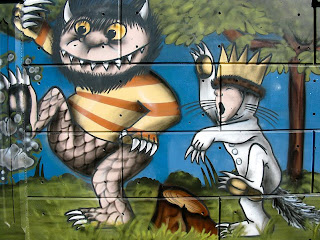Why I love Sampling

One of the cornerstones of hip-hop music is sampling. I've talked to
many people over the years who find sampling uncreative and
unmusical. Personally, I think sampling is a thrilling new kind of art
form, and I hope to convey some of my enthusiasm in this essay.
A critic of sampling says that the sampling artist does not create his
or her own music, but rather takes good ideas from other artists and
re-packages them in a very slightly modified form, and passes this off
as his or her own work. And, I have to say, there are examples of this
where this criticism is dead on. Let's take M.C. Hammer's track "U
Can't Touch This." In this track, the bassline is taken from Rick
James's classic "Superfreak." The problem is, one of the things that
made "Superfreak" so wonderful was, you guessed it, the bassline. So
taking what made the original work wonderful and using it to make your
own work wonderful is not being particularly creative. "U Can't Touch
This" is a good track, and better than many tracks out there, but it's
good in the same way that a print of the Mona Lisa is good, and will
probably look better than most original paintings you could afford to
buy. For Hammer and the print of the masterpiece, the genius of the
original comes through in the reproduction.
Sampling, at its best, is when the sampling artist finds something
that is perhaps unappreciated in the old work, and turns it into
something wonderful and new in the new work. A good example of this is
the drum loop called "Funky Drummer." The Funky Drummer is taken from
a James Brown track. Why is this not the same as the Superfreak
example above? Because 1) the sampled drum sequence is a minor part of
the original track, 2) it doesn't loop in the original but does in the
new, and 3) it's slowed down. You end up with something catchy, new,
and just about unrecognizable. The Funky Drummer takes something
groovy and small, and turned it into a fabulous beast in its own
right.
Examples of sampling exist at every point between these two
extremes. So to me, it's unfair to criticize sampling in general as
being uncreative. It can be uncreative, but, god knows, so can
some jerk on a guitar.
Sampling came onto the musical scene so quickly that the law had to
scramble a bit to catch up with it. It did, though, and now all
samples have to be cleared with the original artist or label to be
released on an album. This is good, and fair, but is not without its
cost. Certain bands like ABBA just about never release sample rights
to anybody, which, in my opinion, is holding back on all the possible
creativity that could have resulted from sampling ABBA. (They made an
exception for Madonna's "Hung Up," simply because the track was so
good).
Anyway, there was a time when people sampled whomever and there were
pretty much no repurcussions. And during this time an album came out
that took sampling to another level, and created, in my opinion, the
greatest sampling work of art ever made: "Paul's Boutique" by Beastie
Boys. Paul's Boutique is so heavy in samples that people are still
trying to track them all down. There are webpages dedicated to the
task. During a time when rap was a bit pared-down and minimal, this
incredible album dropped and just blew people away. Anyway, it's
generally acknowledged that "Paul's Boutique" would be impossibly
expensive to create today, given the enforcement of sampling
laws. It's a relic from an era that's gone forever. Hip Hop today is,
by financial necessity, less sample-based than it was. So in terms of
sampling artistry, "Paul's Boutique" may never be topped. Sigh.
For those of you who are still not convinced that sampling is a
legitimate art form, I want to appeal to two other kinds of sampling
from the visual art world that you might appreciate: collage and
photography.
Collage is not typically the kind of thing that people get all excited
about, except for the stuff Terry Gilliam did for Monty Python's
Flying Circus. I challenge anyone to watch his stop-action animated
collages and deem it non-creative.
Photophaphy is an interesting case of visually "sampling" from our
environment. Like a bad music sampler, a photographer can "cheat" and
have an interesting photograph of something that is widely acknowledge
to be visually interesting-- a photo of the Mona Lisa, for
example. The best photography, though, chooses as its subjects those
parts of the world we never would have looked at before and says "Look
at this, see how beautiful or interesting it can be." I love it when
I see a gorgeous photograph that shows off the artistic eye of the
photographer-- she saw a lovely composition in cracks in ice, or in
candlewax drippings, or in the way the light played on an old man's
face.
Musical sampling, at its best, is good for the same reasons. So open
your mind to it. There are lots of fascinating examples of creative
use of sampling out there to be appreciated.
And check out "Paul's Boutique" (Which I think is one of the top 5 albums ever).
If my admiration of the album does
not impress you, know that no less than Miles Davis said he never
got tired of Listening to it.

Comments
Jimmy, great post!
Also, did you know that your white rappers webpage is referenced from the Paul's Boutique wikipedia website? It's ref #1.
http://en.wikipedia.org/wiki/Paul%27s_Boutique#_note-0